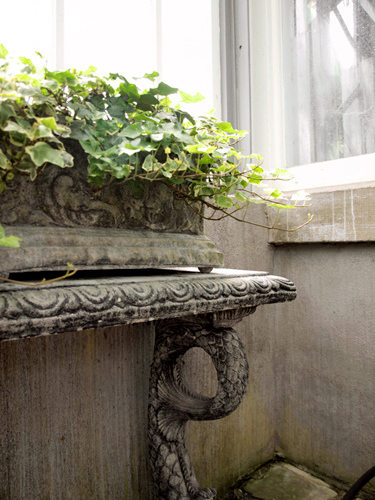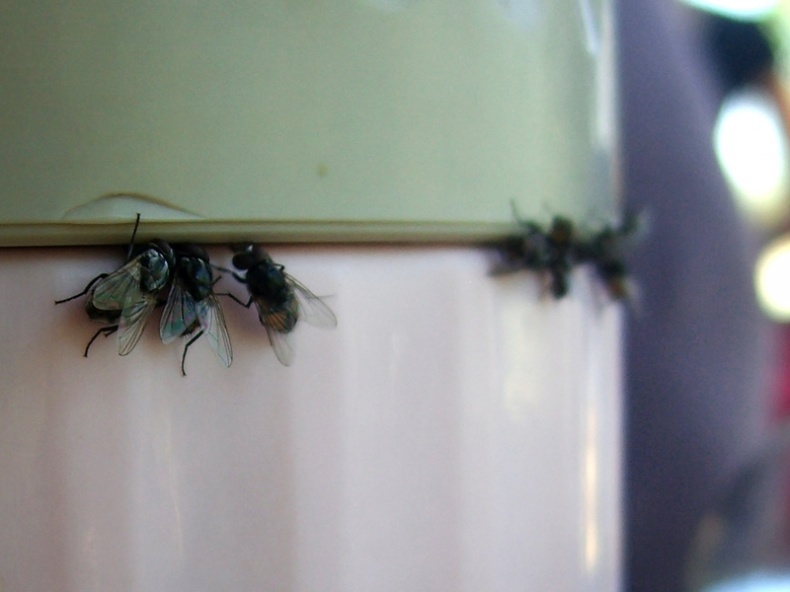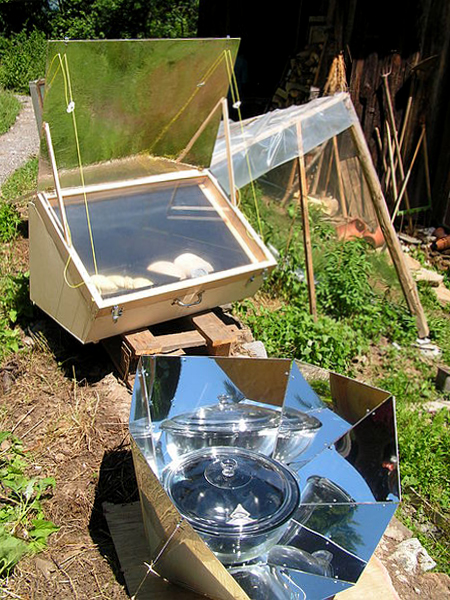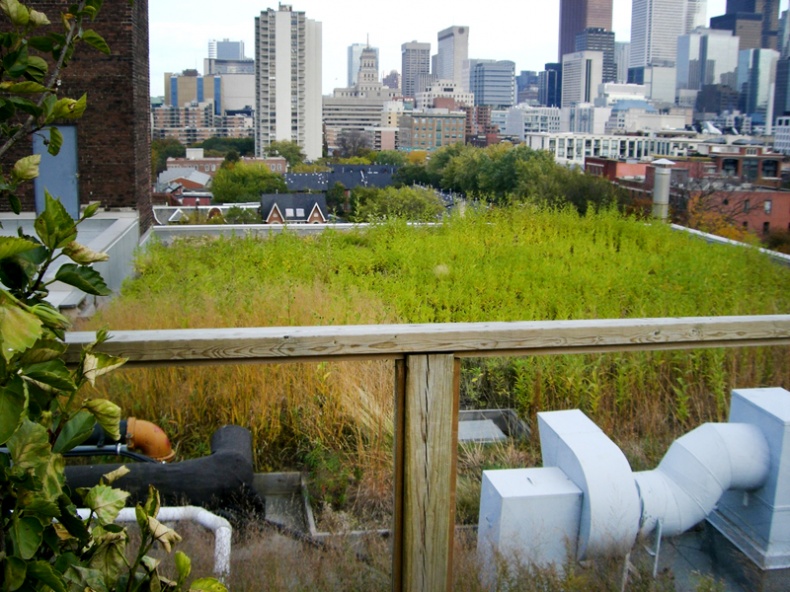
Ivy and Stone by Masha
Summer's here and it's time to get creative and do something really cool for your house! There are many useful green projects that can help you improve your living standards during the summer in really affordable and fun ways. Also, you can finally go out into your garden and do something other than shovelling five hundred times a day. Do you feel like sitting in the back of your garden in a chair that's made of grass, or make a garden in your tiny apartment? No problem. These are all the things you can do on your own using very little resources and have a lot of fun with it. Here are some of the top green tips of this summer.
The Grass Armchair
If you've ever dreamt about having a chair that was made entirely of grass, this is the best time to grow one for yourself. Conventional garden chairs tend to get rusty, or if they're plastic, they lose colour and look really bad after few weeks of usage. You'll never have to worry about this with a grass chair anymore; the only problem is that it dries a bit more slowly than ordinary plastic or iron. Purves and Purves, a British furniture design shop, offers a do-it-yourself flatpack kit with all you need to make a great grass chair for your garden. The flatpack includes 14-piece corrugated cardboard frame and a package of grass seeds. After you assemble the cardboard frame, you fill it with 240 litres of soil (you have to supply your own), sprinkle the grass seeds over it, and water it daily. It starts to grow after just ten days. It's great to put it somewhere where you can watch it grow daily. If you don't want to spend money on a chair from Purves and Purves, you can even get creative and design your own frame. It's not that hard; just make sure it's symmetrical. You can also make different grass furniture, like a sofa with the base made from bricks, or any other shapes your fantasy craves.
Summer Garden in Your Apartment
Linsey Lewis Hasenbank's blog brought the revolutionary concept of small space gardens to everyone who lives in an apartment and doesn't have a large backyard. It's a great way to grow your own vegetables. Wouldn't it be great to satisfy your craving for a fresh vegetable salad whenever your family feels like having one? You don't need much, just few wooden wine crates, some basic sets of sprinklers you can buy in any gardening shop, and whatever plants you like. If you don't drink wine, any wooden crates will do. It's a great thing to do during a nice summer afternoon.
Rain Barrels
You should make rain a resource. Capturing rain from your roof top is a brilliant way to give your lawn and garden chlorine-free water. Use a rain barrel to harvest rain for when it's needed and help keep a useful resource from running down the storm drain. On average, Canadians use more than 340 L per day in their households for activities such as washing dishes and clothing, showering and flushing toilets. During the summer, this water consumption can double, largely due to outdoor irrigation practices. The rain barrel is a practical alternative to using treated drinking water on lawns and gardens. According to RiverSides' homeowner's guide to rainfall, the city may install a 214-litre rain barrel if suited to your property as part of the City of Toronto's free Downspout Disconnection Program. The City of Toronto also provided do-it-yourself instructions to disconnecting your downspouts for those who like to finish the work around the house themselves.
Ecological Fly Repellent

Flies Loving Food
by Alpha
Summer is also about hanging out outdoors, having a nice dinner with your family in the garden. This brings some natural problems along. I'm talking about flies. They seem to love our presence and moreover, they love our food. If you want to get rid of flies, you have just a few options. You can use harmful sprays to repel all the insect that come near your food, but than you'll probably eat and breath a bit of the pesticide yourself, which isn't very good. Another option is expensive repellent that claims to have no pesticides or any harmful substances in it but essentially doesn't work at all.
Here is a simple but functional solution. Just fill a plastic bag with water and hang it from a ceiling near the place where you're going to eat and the movement of the water and the shadows it casts makes the flies nervous and they will stay away from the area. This is the old trick of Mexican food market merchants who always do the same thing when they want to scare off flies from their precious goods. Light gets refracted from the water and creates colours and shapes flies don't recognize so they buzz away. It's understandable that you might not want to hang a plastic bag from your ceiling if you're hosting some special guests. A Mexican-born designer José de la O, who's currently living and working in the Netherlands, created an awesome-looking Anti-Fly Sphere. The blown glass droplet shape produces the same effect as the plastic bag, but it's also a very attractive addition to your yard or dining area.
DIY Clothes Line
There's nothing like freshly sun-and-wind dried sheets. The smell is unbelievable. When you go to bed, you can smell the light summer breeze, trees, and grass in your backyard. Interior designer Suzanne Shaker and art conservator Pete Dandridge designed their outdoor clothes line based on a childhood memory: a vision of white sheets blowing in the country wind, and you can find it on Remodelista website.You just need two simple strips of cedar that are joined at the top with a stainless steel dowel pin, which allows the height to be adjusted to keep longer sheets from dragging on the ground. The whole thing doesn't cost more than $40.
Eco-friendly DIY Air Conditioner
Do you want to have fun with your family? Make a green air conditioner for your camping in summer. This is one of the ways how to get your kids interested in green living through a fun, hands-on example.
According to an Instructables' post: "The homemade AC will not only cost you less, but will also keep the electricity bill under control. To build yourself an AC unit, all you have to do is gather a cooler, some tubing, a water pump, and a fan." The idea for homebrew air-conditioning first appeared in Ontario in 2005 thanks to a young student named Geoff Milburn who got quite a bit of attention back then, and let me say, I really think it was worth it. It's a simple yet ingenious design that saves a lot of money and energy as well.
Solar Cooker

Sun Oven Box Cooker
by Wikimedia Commons
A solar cooker, or solar oven, is a device that uses the energy of sunlight to heat food or drinks to cook or sterilize them. High-tech versions, like electric ovens powered by solar cells, are also available, and have some advantages, such as being able to work in diffuse light. However, you don't see many of them nowadays since they are really expensive. The vast majority of solar cookers are relatively cheap, low-tech devices. Because they use no fuel and cost nothing to operate, many nonprofit organizations are promoting their use worldwide to help reduce fuel costs. Solar cooking is a form of outdoor cooking that is often used in situations where minimal fuel consumption is important or the danger of accidental fires is high.
According to the Wikipedia article, simple solar cookers use the following basic principles to work:
- Concentrating sunlight: A reflective mirror of polished glass, metal, or metalled film is used to concentrate light and heat from the sun into a small cooking area, making the energy more concentrated and increasing its heating power.
- Converting light to heat: A black or low reflectivity surface on a food container or the inside of a solar cooker will improve the effectiveness of turning light into heat. Light absorption converts the sun's visible light into heat, substantially improving the effectiveness of the cooker.
- Trapping heat: It's important to reduce convection by isolating the air inside the cooker from the air outside the cooker. A plastic bag or tightly sealed glass cover will trap the hot air inside. This makes it possible to reach similar temperatures on cold and windy days as on hot days.
There are many simple and inexpensive ways to make a solar cooker or oven. You can choose between panel, box, or parabolic cookers — whatever suits you best.
Green Roof

Green Roof by Dreamymo
Green roofs provide many benefits when installed correctly, including water storage, decreasing flood risk, aesthetic impact, and habitat creation. While large-scale projects should be entrusted to specialist firms, smaller scale domestic projects, such as garage roofs and sheds, are relatively simple to install as long as they follow certain guidelines. Enviromat video will walk you through a slightly different type of green roof, using pre-grown vegetation panels, step by step.
If you want to make a grass roof, you have two questions to answer before you start with the process. At what angle can you install a green roof? It's not recommended that you build a green roof on a slope of over 10° without specialist advice. The second question is whether the structure of your roof can support a green roof. Simple, lightweight green roofs weigh between 60-150 kg/m2 (13.0-30.0 lb/sq.ft). If you're unsure of the loading your roof can take, consult an architect or structural engineer before you do anything else.
The layers on a green roof are as follows: vegetation on top, then substrate, filter layer, drainage board, root-resistant waterproofing, and finally roof deck. Small scale DIY roofs require a simplified version, consisting of only three layers: the waterproof/root-proof membrane, the substrate, and finally the planting or vegetation. Also, a frame should be built around the perimeter of the roof out of rot-resistant materials. This will ensure the green roof materials remain contained. Ensure that the frame does not block water from draining off the roof. Be careful to ensure the waterproofing is not damaged at this stage. The maintenance requirement of a DIY roof is usually minimal.





